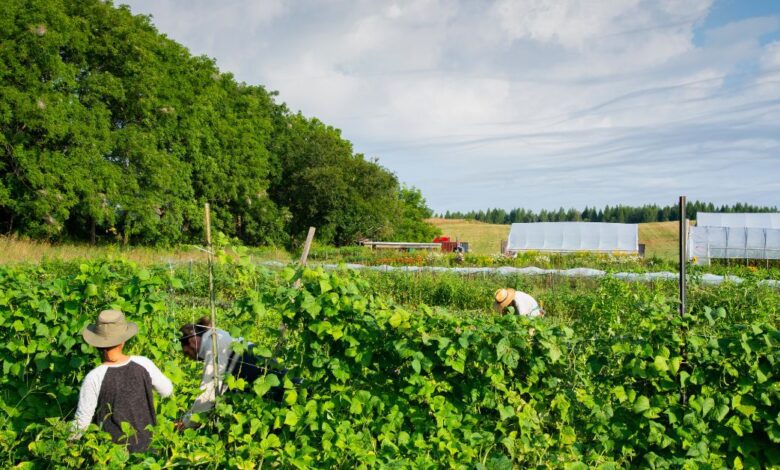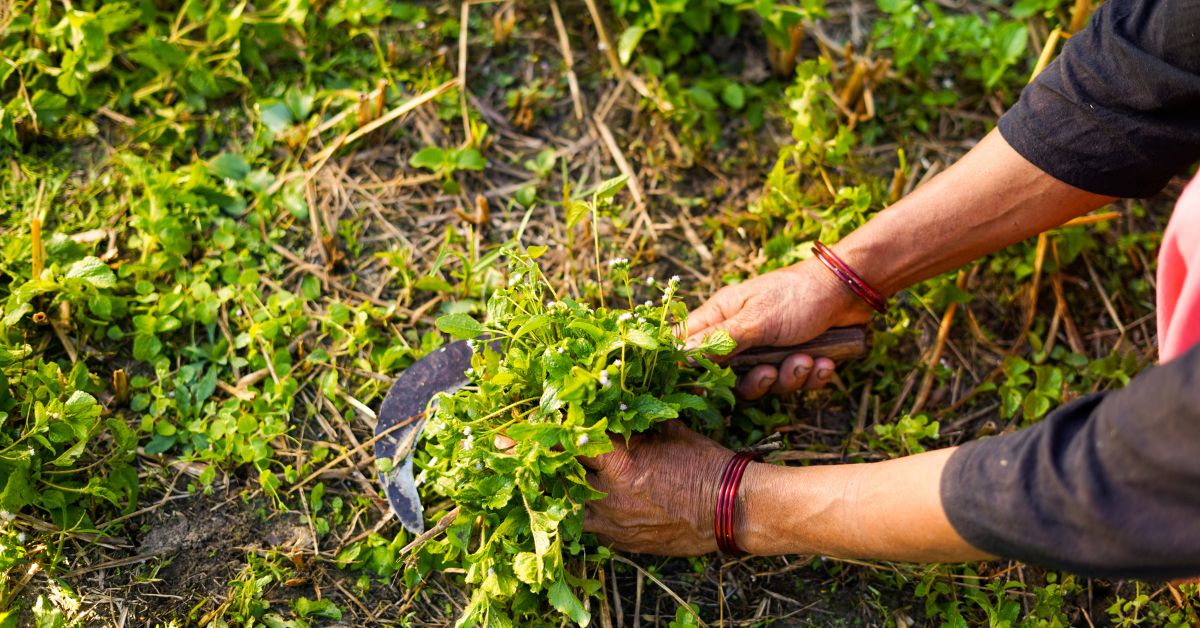What is Sustainable Agriculture? Unlocking the Future of Farming

What is sustainable agriculture?
Sustainable agriculture is an approach to farming that aims to meet current food and fiber needs without compromising the ability of future generations to meet their own needs. It encompasses a wide range of practices and principles that prioritize environmental stewardship, economic viability, and social responsibility. At its core, sustainable agriculture seeks to minimize the use of synthetic inputs, promote the health and diversity of ecosystems, and ensure the long-term productivity and resilience of agricultural systems.
Benefits of sustainable farming
The benefits of sustainable farming are manifold and far-reaching. By adopting sustainable practices, farmers can:
- Improve soil health and fertility: Sustainable farming methods, such as cover cropping, crop rotation, and the use of organic amendments, can enhance soil structure, increase nutrient availability, and reduce the need for synthetic fertilizers.
- Conserve water resources: Sustainable farming techniques, like drip irrigation and water-efficient crop selection, can significantly reduce water consumption and minimize the impact on local water sources.
- Reduce greenhouse gas emissions: Sustainable agriculture practices, such as reducing tillage, optimizing fertilizer use, and incorporating agroforestry, can help mitigate climate change by sequestering carbon and reducing the release of greenhouse gases.
- Promote biodiversity: Sustainable farming methods, including the use of diverse crop rotations, the preservation of natural habitats, and the integration of beneficial insects and organisms, can foster a more diverse and resilient ecosystem.
- Improve human health: Sustainable agriculture often prioritizes the use of organic, non-GMO, and pesticide-free products, which can lead to healthier food options and reduced exposure to harmful chemicals.
- Enhance economic resilience: By reducing reliance on costly inputs, diversifying production, and tapping into growing markets for sustainable products, sustainable farmers can improve their long-term financial viability and economic resilience.
Also read: Understanding the Difference: Carbon Neutral vs. Net Zero
Sustainable agriculture practices
Sustainable agriculture encompasses a wide range of practices that aim to minimize environmental impact and promote long-term productivity. Some of the key sustainable agriculture practices include:
- Organic farming: Organic farming relies on natural fertilizers, such as compost and manure, and avoids the use of synthetic pesticides and herbicides. This approach helps to maintain soil health, support biodiversity, and produce nutritious, chemical-free food.
- Integrated pest management (IPM): IPM combines various biological, cultural, and mechanical pest control methods to manage pests while minimizing the use of synthetic pesticides.
- Crop rotation and diversification: Rotating different crops and incorporating a diverse range of plants can help to improve soil fertility, suppress weeds and pests, and enhance the overall resilience of the agricultural system.
- Agroforestry: Agroforestry involves the integration of trees and shrubs into crop and livestock production systems, which can provide a range of benefits, including improved soil quality, increased biodiversity, and the production of additional food and fuel sources.
- Precision agriculture: Precision agriculture utilizes technologies like GPS, sensors, and data analysis to optimize the use of inputs, such as water, fertilizers, and pesticides, thereby reducing waste and environmental impact.
- Conservation tillage: Reduced or no-till farming practices can help to minimize soil disturbance, reduce erosion, and enhance soil carbon sequestration.
- Water conservation: Sustainable water management techniques, such as drip irrigation, rainwater harvesting, and the use of drought-resistant crops, can help to conserve precious water resources.
Organic farming and its role in sustainability
Organic farming is a key component of sustainable agriculture, as it aligns with many of the principles of environmental stewardship and resource conservation. By avoiding the use of synthetic pesticides, herbicides, and fertilizers, organic farming helps to maintain soil health, protect water quality, and support biodiversity. Additionally, organic farming often relies on crop rotation, cover cropping, and other natural methods to manage pests and maintain soil fertility, further enhancing the sustainability of the agricultural system.
Regenerative agriculture and its impact on the environment
Regenerative agriculture is a holistic approach to farming that goes beyond the principles of sustainability, actively working to restore and enhance the health of the land, water, and ecosystems. This approach focuses on practices like no-till farming, cover cropping, and the integration of livestock, all of which can help to sequester carbon, improve soil fertility, and promote biodiversity. By regenerating the natural resources that underpin agricultural production, regenerative agriculture has the potential to mitigate climate change, improve water quality, and create more resilient and productive farming systems.
Also read: What are the Three Pillars of Sustainability?
Technology and innovation in sustainable agriculture
Technological advancements have played a crucial role in driving the transition towards more sustainable agricultural practices. From precision farming techniques that optimize the use of inputs to the development of renewable energy sources for on-farm operations, technology has enabled farmers to increase productivity while reducing their environmental footprint. Additionally, innovations in areas like vertical farming, aquaponics, and the use of drones and robots for precision monitoring and targeted interventions have further expanded the possibilities for sustainable agriculture.
The role of government and policies in promoting sustainable farming

Governments around the world have recognized the importance of sustainable agriculture and have implemented a range of policies and initiatives to support its adoption. These include subsidies and incentives for farmers who adopt sustainable practices, the development of robust organic certification standards, and the investment in research and extension services to help disseminate best practices. Additionally, policies that address issues like water rights, land use, and the pricing of agricultural inputs can significantly influence the transition towards more sustainable farming systems.
Also read: The Dirty Truth You Need to Know About Fossil Fuels
Challenges and barriers to adopting sustainable agriculture
Despite the numerous benefits of sustainable agriculture, there are still significant challenges and barriers that hinder its widespread adoption. These include:
- Financial constraints: Transitioning to sustainable farming practices can require significant upfront investments in equipment, infrastructure, and training, which can be a deterrent for many farmers, especially small-scale and resource-poor producers.
- Knowledge and skill gaps: Sustainable agriculture often requires a different set of skills and knowledge compared to conventional farming, and many farmers may lack access to the necessary training and extension services.
- Market access and pricing: Sustainable and organic products may face challenges in terms of accessing larger markets and obtaining fair prices, which can make it difficult for farmers to compete with conventional produce.
- Policy and regulatory barriers: Existing policies and regulations, such as subsidies and trade agreements, may still favor conventional agricultural practices, creating disincentives for farmers to adopt sustainable approaches.
- Cultural and social norms: Overcoming deeply entrenched cultural and social norms around traditional farming practices can be a significant challenge, particularly in regions where sustainable agriculture is not yet widely accepted or understood.
The future of sustainable agriculture
As the world grapples with the pressing challenges of climate change, environmental degradation, and food security, the future of agriculture lies in the widespread adoption of sustainable practices. By embracing the principles of sustainable agriculture, farmers, policymakers, and consumers can work together to create a more resilient, equitable, and environmentally-friendly food system.
In the years to come, we can expect to see continued advancements in sustainable agriculture, driven by innovations in technology, the development of supportive policies and incentives, and the growing consumer demand for environmentally-conscious food products. As sustainable agriculture becomes more mainstream, it has the potential to transform the way we produce, distribute, and consume food, ultimately leading to a more sustainable and prosperous future for all.
To learn more about sustainable agriculture and how you can support this movement, visit our resources page or contact us today. Together, we can create a greener, more sustainable future for generations to come.




